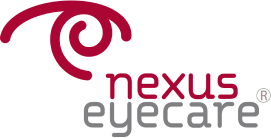
What is Strabismus?
Strabismus, also known as squint, is a condition that affects the coordination of the eye muscles, causing the eyes to point in different directions. It’s like a miscommunication between the eyes, making it difficult for them to work together and focus on the same spot. Sometimes, one eye may look straight ahead while the other eye turns inward, outward, upward, or downward. This misalignment can be constant or come and go. It can be quite noticeable, and it may affect a person’s appearance or cause visual disturbances. Treatment options are available to help align the eyes and improve vision in individuals with strabismus.
- Lazy Eye
- Turned eye
- Crossed eyes
Strabismus can affect individuals of all ages, but it is most commonly seen in children. Approximately four percent of children experience strabismus. However, it is important to note that strabismus can also occur in adults. The condition affects both males and females equally. While there may be instances where strabismus runs in families, many individuals with strabismus do not have any relatives with the condition.
Strabismus progresses through different stages, affecting both children and adults differently. In children, when one eye turns, the brain learns to ignore or suppress the image from the misaligned eye, relying more on the straight or better-seeing eye. This can cause problems with depth perception and seeing in 3D as well as a reduction in the vision of the misaligned eye. In adults, however, they may experience double vision because their brain is already used to receiving input from both eyes and can't ignore the image from the turned eye. Each person's experience with strabismus is unique, so it's important to consult with an eye care professional who can suggest the correct strabismus treatment, which may include glasses, patching treatment, exercises, or strabismus surgery.
Treating strabismus is most effective when started at a young age, but it can be addressed at any stage of life. Straightening the eyes is possible and can lead to improved side vision.
Strabismus treatment in children can be non-surgical and may involve options like eye drops, patching of the stronger eye, exercises, or glasses. If strabismus surgery is needed, it is generally recommended to be done earlier in life (preferably within 6 months of the onset of the crossed eye) to increase the chances of developing some binocular vision (the ability to use both eyes together and see “3D”).
An ophthalmologist, after conducting a comprehensive eye examination, including an evaluation of the inner parts of the eye, will recommend the most suitable crossed eye treatment approach, which can involve optical, medical, or surgical therapy.
The crossed eye treatment goals for strabismus focus on improving or preserving vision, straightening the eyes, and restoring binocular vision. Sometimes, covering or patching the stronger eye is necessary to improve vision in the weaker eye prior to any surgical intervention.
Depending on the underlying cause of strabismus, crossed eye treatment may involve surgical repositioning of unbalanced eye muscles, cataract removal, correction of other contributing factors, or carefully administered botox injections where appropriate.
Remember, each person's strabismus treatment plan will be tailored to their specific needs and circumstances, so consulting with an eye care professional is essential for personalised care.
Strabismus can be caused by different factors. It may occur due to problems with the eye muscles or their nerves, vision impairment or blindness in one eye, structural issues within the eye, obstructions to clear vision during early childhood, abnormalities of the eye socket (orbit), adjacent facial sinuses, and facial and skull bones. Sometimes, the exact cause is unknown. Regardless of the cause, strabismus results in a misalignment of the eyes. It's important to have a thorough evaluation by an eye care professional to determine the specific cause and appropriate treatment for strabismus.
Symptoms of strabismus can vary depending on the age of onset, the individual, and the severity of the condition. Here are some common symptoms:
Misaligned or crossed eyes: The eyes may appear to be pointing in different directions, with one eye turned inward, outward, upward, or downward in relation to the other.
Double vision: Seeing two images of the same object simultaneously, known as double vision, can occur in some cases of strabismus especially if the onset is in adulthood.
Eye strain or discomfort: Straining or discomfort in the eyes may occur when trying to focus or coordinate the misaligned eyes.
Headaches: Persistent headaches, particularly after prolonged visual tasks, can be a symptom of strabismus.
Reduced depth perception: The ability to perceive depth or judge distances accurately may be affected when the eyes are misaligned.
In adults, strabismus can sometimes be a symptom of underlying brain disorders or diseases such as high blood pressure (hypertension) or diabetes. It is essential to consult with an eye care professional to determine the cause and appropriate treatment. Crossed eye surgery, also known as strabismus surgery, is one approach used to realign the eye muscles to help improve eye coordination and cosmesis. The specific crossed eye treatment plan will depend on the individual's condition and needs.
If left untreated:
In children, strabismus can lead to permanent vision loss in one eye, known as amblyopia or "lazy eye." In adults, untreated strabismus can result in persistent and bothersome double vision. Early intervention and strabismus treatment are important to prevent these complications and improve visual outcomes. It is recommended to consult with an eye care professional for appropriate evaluation and personalised strabismus treatment options
What is Amblyopia ?
Amblyopia, also known as the lazy or weak eye, is a condition where one eye has reduced vision because the connection between that eye and the brain’s visual centre has not developed to its full potential.
Here are some clues that can help identify children with amblyopia:
- Look for differences in the position of the light reflection on the cornea (the clear front part of the eye) of each eye. If the reflections are not in the same corresponding position on each eye, it could indicate turned eye (strabismus) is present which is a common cause of amblyopia.
- Sometimes, children have folds of skin on the inner side of their eyes (epicanthic folds) which may give the impression that the child has a turned eye, particularly if they are not looking straight ahead, when in fact their eyes are straight based on corneal light reflections.
- In this day and age, almost all of us take pictures of our children on our mobile phones and this is very useful to be able to show your treating eye specialist why you are concerned that your child might have a turned eye.
- Taking pictures at night without using “red eye” reducing filters can sometimes also be useful in picking up other causes that may result in amblyopia. Instead of a red reflex, there may be no red reflex at all or a complete or partial white reflex which may indicate a congenital cataract or a growth in the eye, or asymmetry in the refractive error or prescription between the two eyes.

